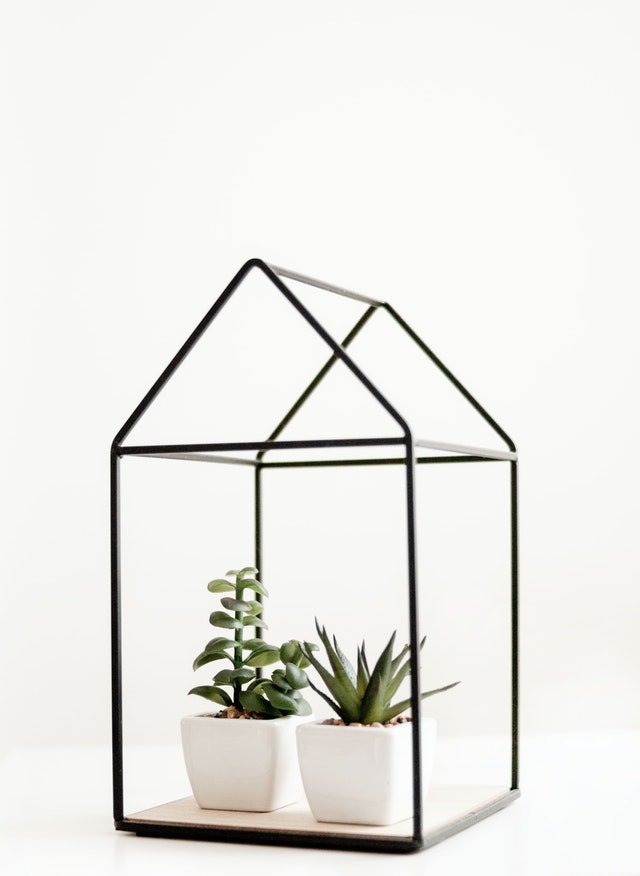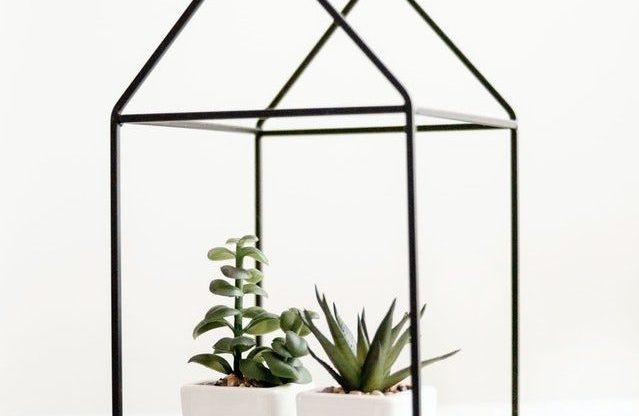Who doesn’t love flowers or some hanging plants in their house? They add color to the room, bring some nature inside, and have been found to make people happier. However, when you look around the internet, there are many articles making extraordinary claims on the positive effects on indoor air quality.
Houseplants provide a negligible positive effect on indoor air quality. As all plants, houseplants take up CO2 and produce oxygen. Additionally, they can take up some amount of air pollutants. Ventilation remains the most important factor for good indoor air quality.
In this article I will cover what plants really do and why, as well as why the popular NASA study on houseplants is not quite applicable to your living room. Additionally, I will provide some other options to improve your indoor air quality.
The positive effects of houseplants
When you look around the internet, the list of positive effects of houseplants seems to be endless, from cleaning your air from toxins to increasing oxygen levels. Unfortunately, not all of these claims actually hold true for your living room compared to the testing environment of the study. Additionally, ventilation often takes care of most of your indoor air problems, and houseplants make no real difference.
So, lets start with what plants actually do:
- photosynthesis: converting CO2 (carbon dioxide) to O2 (oxygen) with the help of energy from the sun;
- increase air humidity by evaporation (basically sweating);
- ‘catch’ airborne particles such as dust with their leaves
- ‘ingest’ gases and possible air pollutants
Additionally, some studies say that office plants:
- increase productivity
- lower psychological stress
- increase attention span
- improve well-being
- make people feel happier at work

Why the NASA study on houseplants is not applicable to your living room
A lot of bloggers claim that there are several houseplants that greatly improve indoor air quality. However, almost all of them are based on a single NASA study that was specifically designed for spacecrafts, not for a common livingroom.
NASA was concerned with the indoor air quality of their spacecrafts since they can’t really open a window in space. Since life is dependent on the earth’s atmosphere and ecosystem, it makes sense to test if plants can help improve air quality in their spacecrafts. However, their tests were designed for this specific purpose and are not applicable to a common living room.
Lets see the conditions in which NASA tested their plants:
- small closed-off space (30 square inch/0.76 square meters)
- no ventilation
- no air movement
- constant light from all sides to allow for maximum photosynthesis
None of these conditions apply to your living room I imagine.
Additionally, NASA only tested 19 different plants, so claiming that any of those plants is the best at improving indoor air quality is not quite fair.
According to J.R. Girman, chief indoor air division at the Environmental Protection Agency, to have any sort of effect on indoor air quality you need at least 5 plants per square meter. That is about 700 plants for a regular 140 m2 house! (source)
Ventilation in your living room does the job
In your living room there is an abundance of ventilation. Either natural ventilation through leaks and cracks (this is normal and on purpose), or through ventilators and vents. Often you have both.
If you do not think you have proper ventilation, maybe because you experience some health effects from the sick building syndrome, you can read all about ventilation in our article.
Ventilation makes sure your indoor air is constantly refreshed and possible polluted air is replaced by fresh outdoor air. This effect is way more effective than anything any number of plants can provide, and not at all comparable to the NASA study in which they tested in a small closed-off space.
Plants can help reduce CO2
A study on the potential of houseplants to reduce indoor air CO2 levels was done in an indoor office. So, in contrast to the NASA study, this research could provide some useful results.
The study concluded that plants function best when the following conditions are met (source):
- good health (proper management of plants)
- very high light conditions (five times higher than in an average office)
When these conditions are met, their CO2 assimilation was highest. However, in order to remove 10% of a persons exhaled CO2, about 15 high performing plants were needed. In normal conditions, however, it is likely that you will need about 100 plants to reduce CO2 levels.
The best performing plants from this study were:
- Common ivy (Hedera helix)
- Peace lily (Spathiphyllum)
Additionally, this study tested exactly 5 common houseplants, while there are over 350.000 known plants on earth. So, concluding that these plants are the best in reducing CO2 levels is not quite fair.
Although plants can help reduce CO2 and have a host of other benefits, if you need serious help reducing CO2 levels, we recommend to look for other options such as ventilation and air purifiers. You can read all about CO2 in our article: What are healthy indoor CO2 levels? (safe levels, health effects and what to do about them)
What about oxygen production by plants?
It is of course true that plants make oxygen from CO2 and sunlight. However, this does not mean that houseplants increase indoor oxygen levels and lower CO2 levels.
The air that we breathe contains about 21% oxygen while it only contains about 0.04% CO2. That means even if your houseplants would take up all the CO2. and convert it to oxygen, your oxygen levels will be 21.04%. Not really a noticable difference.
Of course, this is not the situation your living room is in. Due to ventilation, the indoor air is continuously refreshed with new air that contains again 21% oxygen and 0.04% CO2. So no matter how many plants or how hard your plants work, your oxygen and CO2 levels will not be changed by them.
However, there are serious consequences of high levels of CO2., and they do occur when ventilation is not adequate. You can read all about elevated CO2 levels in our article on CO2.
Preventing high CO2 levels is easy
Luckily, by making sure your ventilation is properly working you never need to worry about CO2 levels being too high. Proper ventilation is often already in place in older homes due to natural ventilation. Additionally, you should make sure that air vents and ventilators are clean.
If you are interested in how to improve ventilation in your well-insulated house without losing heat, you can read our article here.
Air humidity control by plants
Indoor relative humidity is an important factor for comfort and health. When your humidity levels are too high, mold and bacteria growth increases and you have an environment where dust mites thrive. Additionally, high humidity levels can increase allergies.
Low humidity levels can cause other problems such as dry eyes, skin and throat.
The American Society of Heating, Refrigerating and Air-Conditioning Engineers (ASHRAE) recommends a relative humidity level between 35 and 50%. Acceptable levels of humidity are in the range of 20 to 60%.
The study on houseplants and CO2 levels also studied the effectiveness of plants in increasing air humidity, and fortunately the top-performing plants are the same:
- Common ivy (Hedera helix)
- Peace lily (Spathiphyllum)

These plants have been found to be able to increase relative humidity from 40% to 60% in 24 hours. This was, again, under optimal conditions of a lot of light and very healthy plants. This study concluded that about 5 optimally managed plants can do the trick in a small office, and more plants do certainly not hurt.
Again, it should be noted that this study tested exactly 5 common houseplants, while there are over 350.000 known plants on earth. So, concluding that these plants are the best in improving humidity levels is not quite fair.
Conclusion
While several studies have found positive effects of houseplants on indoor air quality and showed that some plants are better than others, this should be taken with a grain of salt.
- The NASA study is really not applicable to a common living room or office.
- The CO2 and humidity study only studied 5 different plants and under extremely favorable conditions.
Therefore, if you are really serious about improving indoor air quality, you should consider the following:
- improve your ventilation system
- install an air quality monitor
This of course does not mean that you should not get some wonderful houseplants! Just don’t expect them to do wonders on your air quality.
Air quality monitors
To make sure you are always aware of the levels of humidity, VOCs, and other harmful substances in your house, an air quality monitor is an excellent tool. An air quality monitor can measure airborne chemicals, temperature, and humidity, depending on the device.
I found a Norwegian company called airthings, that produces excellent air quality monitors. They are easy to operate (just wave your hand in front of the device) and send their data to an app on your phone.
Discount on Airthings air quality monitor
By using this link to the Airthings Wave Plus air quality monitor you will get a discount of about 10%!
This air quality monitor not only measures humidity levels and VOCs but also CO2 levels, temperature, air pressure, and radon.


